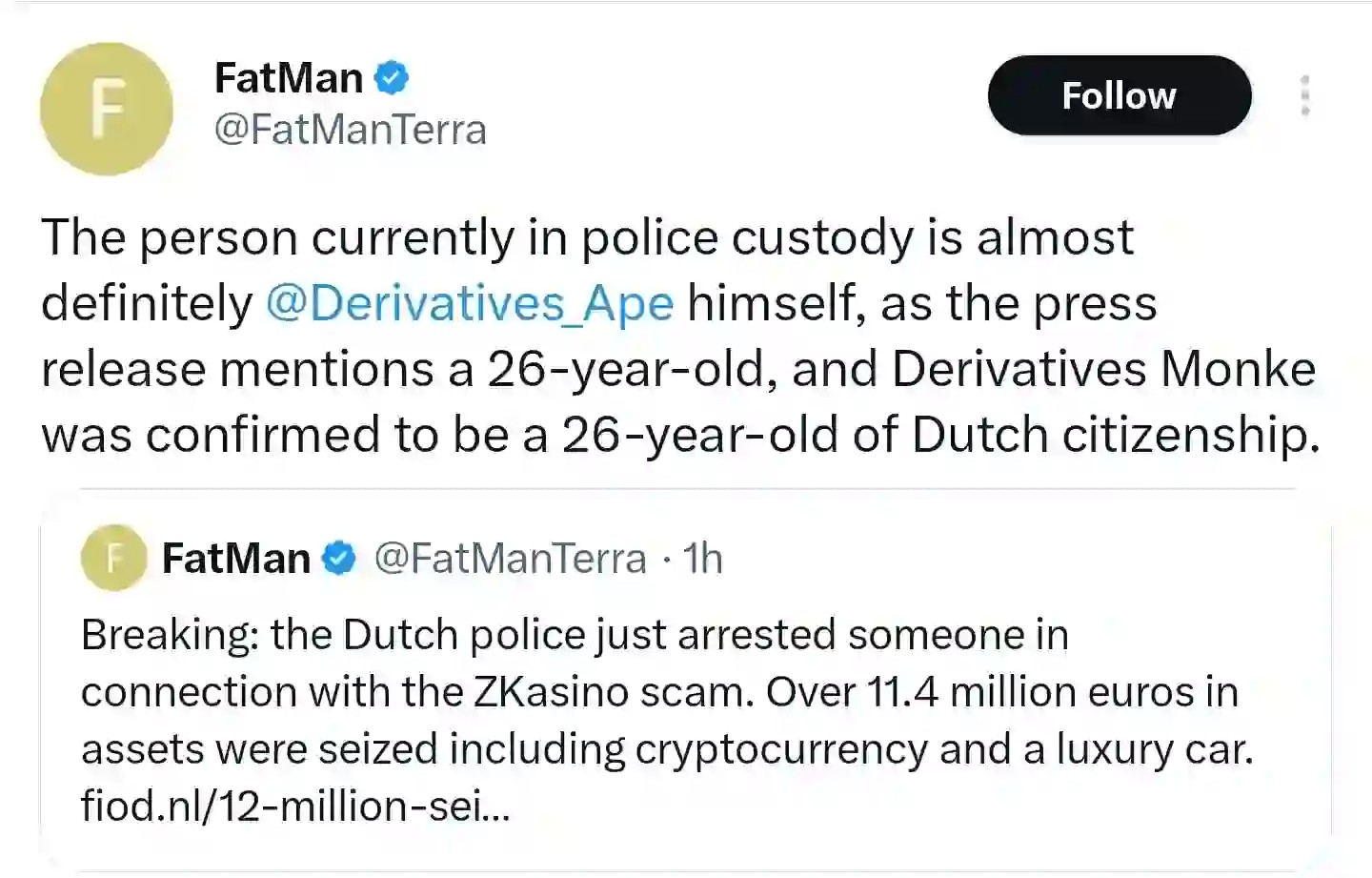n April 29th, Dutch authorities detained a 26-year-old man suspected of fraud, embezzlement, and money laundering related to the ZKasino online gambling platform. According to the Fiscal Information and Investigation Service (FIOD), the man's arrest marks the first in the investigation into the ZKasino scam, where investors lost at least $33 million worth of digital assets that were supposed to be returned within 30 days.

Fraud Allegations and Missing Funds
ZKasino promised users that their crypto deposits would be returned within a month, however, the associated smart contract suggests the platform never intended to refund investors. When users began demanding their money back in January 2022, the site disappeared, and funds worth tens of millions of dollars went missing. FIOD alleges the detained individual helped perpetrate the fraud and launder the proceeds.
Massive Asset Seizure
In detaining the suspect, Dutch authorities seized over 11.4 million euros (approximately $12.2 million at current rates) worth of crypto assets, real estate properties, and luxury vehicles. This included over $6 million in various cryptocurrencies held in digital wallets, two homes valued at $3 million collectively, and high-end cars such as a Lamborghini SUV worth around $200,000. The sizable confiscation reflects the substantial funds siphoned through the alleged scam.
Ongoing Investigation
The detained man's custody was extended a further 14 days to allow more time for investigative activities. FIOD and Dutch prosecutors continue pursuing leads and gathering evidence regarding the full scope of the ZKasino fraud. As one of Europe's leading economic crime authorities, FIOD aims to identify all involved parties and recover as many defrauded assets as possible. This high-profile arrest sends a message that authorities are targeting digital currency scams and will bring perpetrators to justice.
Implications and Takeaways
The ZKasino arrest demonstrates authorities’ growing capabilities and willingness to crack down on cryptocurrency-related financial crimes. While new technologies create new opportunities for fraudsters, they also provide fresh tracks for investigators to follow. Victims of such scams can hopefully take solace in knowing authorities prioritize recovery efforts. As the details of this complex case continue unfolding, its ultimate resolution may help educate consumers and regulators on better protecting the digital asset space.










